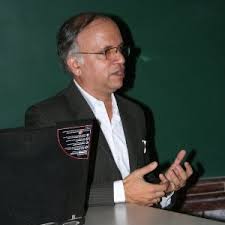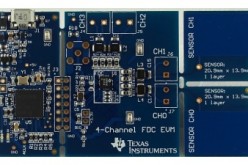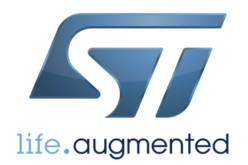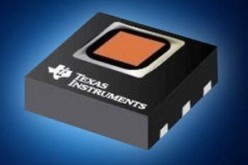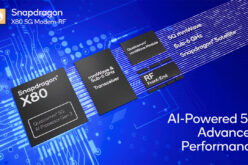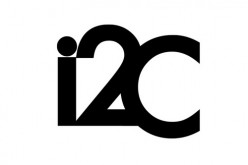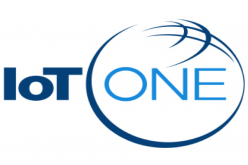IoT is old wine in new bottle

In this interview we take a look at a systems design house named Shalaka Technologies. They focus on embedded systems design, and specialise in the integration of MEMS, communication interfaces, GPS and general packet radio service (GPRS) in industrial solutions.
|
Shalaka’s tech strongholds Q. What’s your organisation’s unique selling proposition (USP) with reference to electronics design? A. Shalaka Technologies Pvt Ltd is a 10-year-old company focusing on embedded systems and software technologies. Our main areas of expertise are radio-frequency identification (RFID) for asset tracking and security, global positioning system (GPS) for vehicle tracking in logistics and transportation, camera-based machine vision in industrial quality inspection and automation. Our USP is the urge to learn new technologies, identify pain areas in the Indian manufacturing sector and offer solutions that are ahead of their times. Q. What are the key technologies you are working on? A. Shalaka has used technologies such as automatic identification using bar codes, smart cards, RFID, near-field communication (NFC), biometrics and GPS. It has used state-of-the-art communication interfaces such as Ethernet, Wi-Fi, Zigbee and controller area network (CAN). We have integrated various micro-electro-mechanical systems (MEMS) sensors in our solutions. We also have deep expertise in camera-based machine vision applications in the manufacturing sector. Q. Out of these, are there any technologies that you specialise on—are famous for? A. We specialise in almost all the above-mentioned technologies, but I can mention integration of MEMS, communication interfaces, GPS/ general packet radio service (GPRS) in industrial solutions as the important ones. Q. Are there any niche industry applications that you focus on? A. Yes, we focus on process and asset monitoring, data analytics and productivity enhancement of original equipment manufacturers (OEMs) in automotive, engineering, pharmaceutical, textile, energy, banking and financial domains. Q. Who have you partnered with for technologies and components? Why? A. We have always partnered with best-in-class global leaders such as Texas Instruments, Sun and Oracle, Dassault Systemes, PTC among others. We believe in quality rather than the cost of technologies and their implementation. Higher initial cost of developing solutions and implementing them provide long-term benefits in terms of zero defects and failure avoidance, thus providing 100 per cent uptime for the client, resulting in reduced costs and enhanced productivity. Clientele and marketing Q. Do you target Indian customers or only global ones? A. For business reasons, we target global markets, especially German-speaking European countries such as Germany, Austria, Belgium and Switzerland; as well as Nordic States, Asia-Pacific (APAC) and Gulf Cooperation Council (GCC) countries. However, we are committed to our domestic clients too, as we believe ‘Make in India’ can happen only if our manufacturing sector can compete in quality with other countries in terms of our cost advantage and technological expertise. We have struck a balance between business pragmatics and nationalist spirit. Q. Can you name some of your leading Indian and international clients and the kind of work you have done for them? A. Though I cannot name the clients for strategic reasons, we have worked with international clients in the automotive and non-automotive engineering domains. For these clients, we have developed controllers, human-machine interfaces (HMI), complete product inspection and control, special-purpose machines using microcontrollers, sensors, transducers and communication interfaces. I have also conducted corporate training on embedded systems at some of these client sites. Q. What is your marketing strategy to reach out to global clients — as in, how do you identify new prospects and then pitch to them to do business? A. We use social media extensively to identify potential clients and reach out to them. LinkedIn has been especially useful to reach top executives in large corporations. We have a local presence, too, in the form of liaison offices and representatives, for that personal touch. Q. Is your strategy the same for Indian clients or is it different? A. We acquire Indian clients by directly reaching them through our marketing team and personal visits. Perspective on the Internet of Things Q. How do you see the IoT phenomenon? Do you see it driving business growth for India’s independent design houses (IDHs), or is it more of a marketing gimmick? A. Frankly speaking, IoT is old wine in a new bottle. However, recent advances in Internet accessibility, mobile devices and semiconductor technology has made it possible to realise the IoT in a cost-effective manner. Yes, the IoT will drive business growth for all stakeholders. While end-users will benefit from reduced operational costs, minimised losses and hence enhanced productivity, Indian IDHs too will benefit tremendously as we have untapped semiconductor talent. India has always been looked at as an information technology (IT) services provider. But, with a good curriculum in electronics engineering, we have a huge pool of embedded systems engineers who have till now been attracted by the IT industry. Q. Then, is this a priority area for your firm’s future growth too? A. We have been working on the IoT for the last six years. Connected devices, and the IoT in particular, is our thrust area. We design our hardware ground-up and never rely on foreign suppliers like those in China. Our raw material, microcontrollers, sensors, transducers, peripheral devices and other semiconductor components are sourced from global leaders in North America, Europe and Japan. Q. What kind of projects has your team worked on, in the IoT arena? A. We have developed connected device solutions for various domains such as automotive, engineering, pharma, healthcare and agriculture, among others. People – the real capital Q. What aspects of embedded systems design is your talent pool specialised in? A. Shalaka’s talent is in embedded systems design, which includes circuit schematic design, printed circuit board (PCB) design, firmware development in C and other software development in Java on Linux and Android platforms. Q. Would you be recruiting design engineers in the next 12 months, and for what positions? A. Yes, we are on an aggressive growth path this year as Shalaka is transitioning to a product company. We plan to hire talent at middle-level positions, in embedded systems and software development using Java. Q. Do you have a training or internship programme? A. Shalaka has always believed in cooperation with academic institutions. We offer training and internship in embedded systems and Java technologies to undergraduate and graduate students as well as fresh and experienced engineers from the industry. Q. Do you hire freshers, and what would be your selection criteria for them? A. Yes, we encourage freshers. More than academic scores, we stress on the ability to learn, passion, honesty, integrity and ingenuity. As long as their fundamentals are strong, technology can be taught and learnt. In the embedded space, learning is a continuous process. We stress more on hands-on skills and non-technical qualities for freshers to succeed in the industry. Q. Do you only hire from Tier-1 and Tier-2 colleges or do you consider good candidates from other institutes too? A. We look for candidates from all institutes. Q. What are the skill-sets that you find lacking in freshers, which they should get trained on during their education, to be easily absorbed by the industry? A. Freshers have weak fundamentals. Universities try to chase technology in an effort to bridge the industry-academics gap. It is a misconception that university education is useless to the industry. I believe universities have a mandate to groom strong engineers. I would expect universities to teach the fundamentals and create industry-ready engineers. Students leaving universities should be strong in the fundamentals, have hands-on experience in handling basic equipment used in embedded systems development, circuit schematic design and PCB routing, soldering skills. They should be trained in reading documents such as data sheets and understanding device parameters. |






